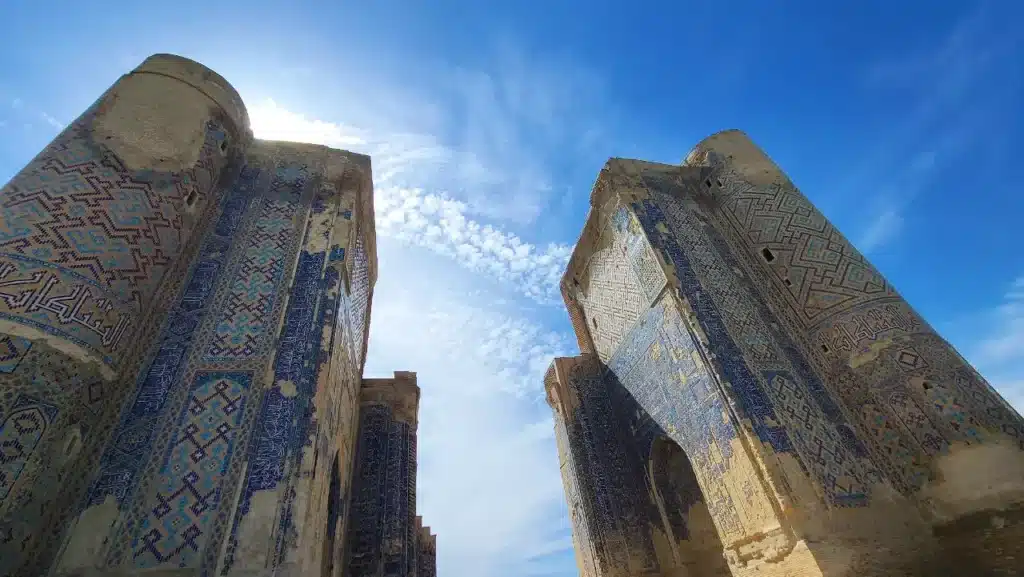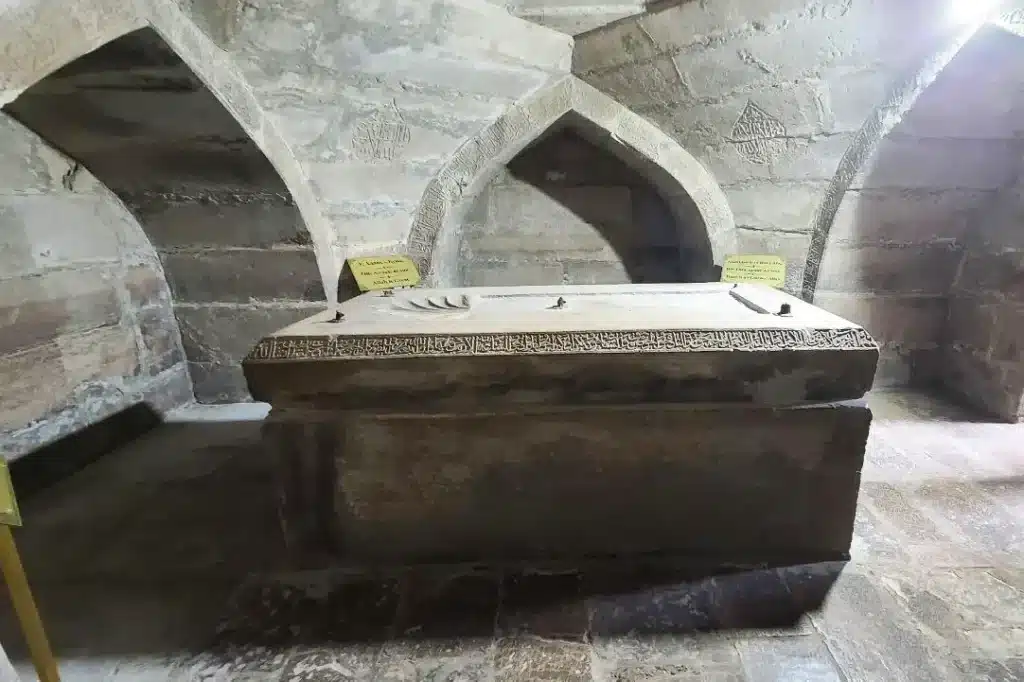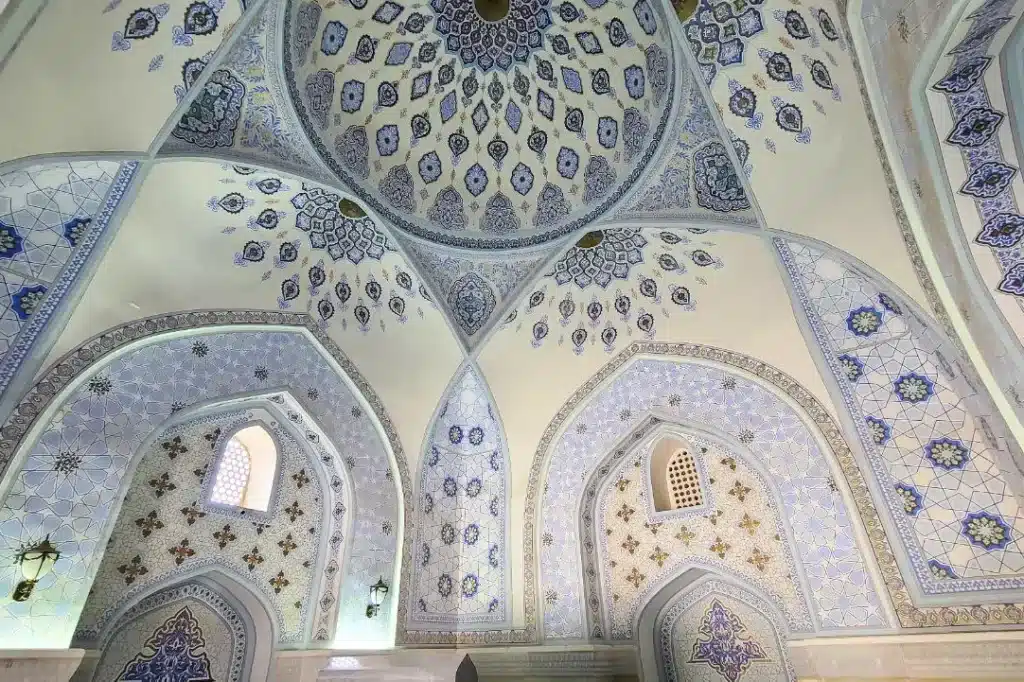Ak-Saray Palace: The Grandest Monument of Amir Temur
1. Introduction
Located in the heart of Shahrisabz, the Ak-Saray Palace is one of the most breathtaking yet underrated historical sites in Uzbekistan. Commissioned by Amir Temur (Tamerlane) in the late 14th century, the palace—meaning “White Palace”—was intended to be the grandest symbol of his empire. Though only fragments remain, its legacy lives on in majestic ruins and poetic chronicles.
2. Why Ak-Saray Palace Was Built
After his sweeping military campaigns, Amir Temur sought to transform his hometown of Kesh (renamed Shahrisabz) into a royal city rivaling Samarkand. In 1380, he ordered construction of a palace that would not only serve as his summer residence but also showcase the power and sophistication of the Timurid Empire.
Over 50,000 workers were involved, including artisans from Bukhara, Samarkand, Urgench, Shiraz, Baghdad, and beyond. Materials were sourced from across the empire—lapis from Badakhshan, marble from Kitab, and jade from Kabulistan.
3. First-Hand Account: Ruy de Clavijo’s Visit
In 1404, Ruy González de Clavijo, a Spanish envoy to King Henry III of Castile, visited the palace and described it in great detail:
“The entrance was vast, flanked by tiled arches… The halls were adorned with gold, lapis, and intricate mosaics. The garden had shaded areas, water basins, and places where large crowds could gather under trees.”
Thanks to his vivid account, we know that the palace included:
- A 300-step-wide courtyard
- Reception halls with golden ceilings
- Lavish private rooms for the ruler and his wives
4. Architectural Highlights & Design Details
Though much of the palace was destroyed, the entrance portal still stands:
- Twin towers once soared to 50 meters, now standing at about 30 meters
- A 22-meter-wide arch—among the largest in Central Asia
- Decorative mosaics in sapphire blue, gold, turquoise, and white
- Kufic inscriptions, including the phrase: “The Sultan is the shadow of God on earth”
The northern-facing facade features intricate spiral mosaics, floral and geometric motifs, and a balance between mass and delicate ornamentation—hallmarks of Timurid architecture.
5. Symbolism and Cultural Significance
Ak-Saray was more than a palace—it was a political statement. Its northern orientation, facing Samarkand, symbolized the unity of Temur’s birthplace with his capital.
The term “Ak”, or “white,” did not refer to color but rather nobility, majesty, and divinity. Historian Sharaf ad-Din Ali Yazdi wrote:
“The Ak-Saray rose from the earth to rival the heavens. No eye had seen its equal since time began.”
Every detail, from the tiling to the inscriptions, was crafted to project imperial authority and artistic brilliance.
6. What Remains Today
Sadly, much of the palace was destroyed in the 16th century by Abdullah Khan of Bukhara. However, what remains is still awe-inspiring:
- Colossal entrance towers
- A surviving arch with original glazed tilework
- Foundations of several halls and a glimpse into the original layout
Soviet and modern Uzbek archaeologists have partially excavated and preserved the site. In 1976, a stunning tile floor was discovered, featuring colors and floral patterns that surpassed de Clavijo’s descriptions.
7. How to Visit Ak-Saray Palace
📍 Location: Shahrisabz, 90 km south of Samarkand
🚗 Access: Easily reached via a scenic drive through the Takhtakaracha Pass
🎟️ Entry Fee: Nominal; guided tours available on-site
🕌 Nearby Attractions:
- Dorus Saodat Complex
- Dorut Tilavat Ensemble
- Timur’s Crypt
8. Travel Tips & Best Time to Visit
🗓️ Best Months: April–May and September–October for mild weather and lush landscapes
📷 Photography: Best lighting in early morning and golden hour
🧭 Pro Tip: Combine your visit with other nearby stops like Teshik-Tosh cave or a cultural lunch experience with locals
9. Final Thoughts
The Ak-Saray Palace may now lie in ruins, but it still tells a story of ambition, artistry, and legacy. For those fascinated by the Silk Road, Timurid history, or Islamic architecture, this site is a must-visit.
Standing beneath its towering portal, you’ll feel the echo of Timur’s vision—a dream built to rival the sky.
✨ Want to see it for yourself? Book our Shahrisabz Day Tour now and walk through history with a local expert.








